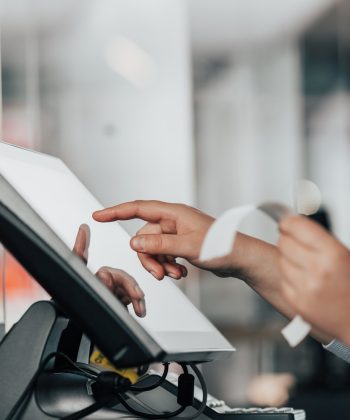In the restaurant industry, staying ahead of the competition requires more than exceptional food and service. Integrating digital tools into daily operations is becoming increasingly vital for improving efficiency, reducing costs, and enhancing the overall customer experience. By leveraging the right technologies, restaurant owners and managers can streamline various aspects of their business, from inventory management and employee scheduling to customer ordering and payment processing.
Adopting digital solutions helps in managing the operational complexities and provides valuable insights into business performance, enabling data-driven decisions. As technology continues to evolve, the opportunities for optimizing restaurant management grow, making it crucial to stay informed about the latest tools and trends that can drive success in the hospitality sector.
Optimizing Inventory Management with Digital Solutions
Effective inventory management is crucial for maintaining the profitability and smooth operation of a restaurant. Digital solutions offer advanced tools that streamline the process, reducing the risk of overstocking or running out of essential ingredients. These tools provide real-time tracking and automated ordering, ensuring that stock levels are always optimal. By integrating inventory management software with point-of-sale systems, restaurants can accurately predict inventory needs based on sales data, helping to minimize waste and manage costs effectively.
Digital inventory systems can enhance supplier relationships by facilitating timely and accurate orders. Automated alerts for low stock levels ensure that necessary items are reordered promptly, preventing disruptions in service. The data collected through these systems can also be analyzed to identify trends and make informed purchasing decisions. Implementing a digital inventory management solution not only saves time but also contributes to better financial management and overall efficiency in restaurant operations.
Enhancing Employee Scheduling and Communication
Managing employee schedules can be a complex and time-consuming task for restaurant managers. Digital scheduling tools simplify this process by allowing managers to create, adjust, and communicate schedules quickly and efficiently. These tools often include features like automated shift reminders and the ability for employees to swap shifts within the system, reducing the administrative burden and minimizing scheduling conflicts. By using digital solutions, managers can ensure that staffing levels are appropriate for each shift, enhancing operational efficiency and employee satisfaction.
Improved communication is another significant benefit of digital scheduling tools. Employees can receive updates and notifications directly on their smartphones, ensuring they are always informed about their shifts and any changes. This level of transparency and accessibility fosters a more organized and responsive workforce. Digital tools can track employee performance and attendance, providing valuable data that can be used for performance reviews and identifying areas for improvement. Overall, implementing digital scheduling and communication tools leads to a more efficient and harmonious working environment.
Streamlining Document Management for Efficiency
Digital document management systems offer a centralized platform where all important documents can be stored, accessed, and shared easily. These systems reduce the reliance on paper, making it easier to manage and retrieve documents such as invoices, contracts, and employee records. By digitizing documents, restaurants can ensure that information is secure, organized, and accessible from anywhere, streamlining administrative tasks and improving overall efficiency.
One of the key benefits of digital document management is the ability to handle large files effectively. For instance, menus, promotional materials, and other documents often need to be shared and stored in PDF format. Using a PDF compressor helps to reduce the file size, making it easier to upload and share documents without compromising quality. This is particularly useful when sending files via email or uploading them to a website, as it ensures that documents are accessible without taking up excessive storage space.
Using a pdf compressor can improve the speed and efficiency of handling digital documents. By reducing the file size, documents load faster and are easier to manage, which is particularly beneficial for restaurants that need to update their menus or promotional materials frequently. Incorporating these digital tools into your document management practices can save time, reduce costs, and enhance the overall efficiency of your restaurant’s operations.
Revolutionizing Customer Ordering with Online Systems
Online ordering systems have transformed how customers interact with restaurants, offering convenience and efficiency. These systems allow customers to place orders through a restaurant’s website or mobile app, reducing wait times and minimizing errors. By integrating online ordering with the restaurant’s point-of-sale system, orders are processed seamlessly, ensuring that kitchen staff receive accurate and timely information. This streamlines operations and enhances customer satisfaction by providing a smoother, faster service experience.
Online ordering systems provide valuable data on customer preferences and ordering habits. Restaurants can use this information to tailor their menus, offer personalized promotions, and improve marketing strategies. Features such as order tracking, multiple payment options, and the ability to schedule orders in advance further enhance the customer experience. Implementing an online ordering system not only meets the growing demand for digital convenience but also opens up new revenue streams and opportunities for customer engagement.
Utilizing Digital Payment Systems for Faster Transactions
Digital payment systems are becoming increasingly popular in restaurants, offering faster and more secure transactions. These systems enable customers to pay using various methods, such as credit cards, mobile wallets, and contactless payments. This flexibility caters to diverse customer preferences and speeds up the payment process, reducing wait times and improving the overall dining experience. By adopting digital payment solutions, restaurants can handle transactions more efficiently, resulting in quicker table turnover and increased customer satisfaction.
Security is another significant advantage of digital payment systems. Advanced encryption technologies protect sensitive customer information, reducing the risk of fraud. These systems also simplify the reconciliation process for restaurant owners, as transactions are automatically recorded and integrated with accounting software. This reduces the likelihood of errors and streamlines financial management. Embracing digital payment solutions helps restaurants stay competitive, meet customer expectations, and enhance operational efficiency.
Boosting Marketing Efforts with Digital Tools
Digital marketing tools offer restaurants powerful ways to attract and retain customers. Social media platforms, email marketing, and targeted online advertisements enable restaurants to reach a broader audience and engage with customers directly. These tools allow for the creation of personalized marketing campaigns that resonate with specific customer segments, increasing the effectiveness of promotional efforts. By analyzing customer data, restaurants can develop targeted offers and promotions that drive repeat business and foster customer loyalty.
Email marketing campaigns can be highly effective for keeping customers informed about special events, new menu items, and exclusive deals. Automated email systems can segment audiences based on their preferences and behaviors, ensuring that messages are relevant and timely. Social media platforms provide a space for restaurants to showcase their offerings, interact with customers, and build a community. Leveraging these digital tools enhances brand visibility, encourages customer engagement, and ultimately drives business growth.
Integrating digital tools into restaurant management is crucial for staying competitive and ensuring smooth operations. From optimizing inventory and improving employee scheduling to enhancing customer experiences with online ordering and digital payments, technology offers numerous benefits.
Adopting these tools helps restaurants streamline processes, reduce costs, and provide a higher level of service to their customers. Efficient document management further supports these efforts, making it easier to handle essential paperwork. Utilizing digital solutions in a restaurant improves day-to-day operations and also positions your restaurant for long-term success in an increasingly digital world.


